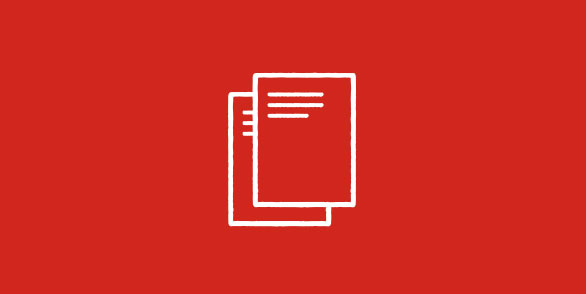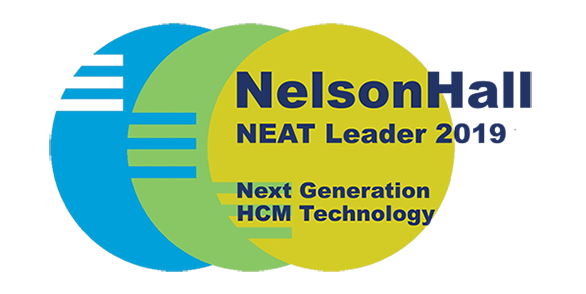To truly understand a business and its people, the more you know the better. Every business requires all-important, data-driven insight – a useful snapshot into an organisation. Data from a single, unified HR system is the strategic benchmark for long-term resource planning. Reflecting recent trends towards using employee-related data to offer better performance, people analytics and staff tracking.
A single unified system for HR data records offers oversight, analysis and planning using the most up-to-date information across any business. To get this right, it’s all about the HCM Suite. By implementing the best single-view software, companies can gain a 360-degree organisational view that helps staff enhance operations and meet legal requirements.
Today, it’s undeniable – HR and technology go hand in hand. In fact, as reported by the BBC, over 64% of senior IT leaders are expecting HR and IT functions to merge together in the next five years.
Table of Contents
The challenge of disconnected systems
Getting everything together in one place is useful in life – and in HR data. Juggling between multiple HR and payroll databases, let alone physical files, used to be the bane of any stupendously busy HR person.
Storing information across a multitude of different data stores that are unable to speak to each other can become problematic. Such disparate systems are a hotbed of errors and inconsistencies, as well as causing confusion and double entering the same info.
Such duplication in work and increased possibility of errors makes disconnected systems unwieldy and unappealing. Often causing unnecessary employee stress, as well as wasting a lot of time and money.
What is a single system of record?
A single system of record is storing all information and data in one place. Whether it’s for a large multinational or payroll for a smaller business keeping data in one unified place works wonders.
Bringing together every bit of employee data in a single database with a unified interface means that employees themselves easily enter and access information – so it’s more likely to be correct. Any staff member can check over their holiday allowance, benefits and pension contributions, bypassing time-consuming HR emails back and forth.
Staff stress and pressure are reduced as people can self-help and update info in an instant. Any time information has to be updated, there is only one change to be made and there’s not a risk of outdated information lurking elsewhere being left unamended.
This makes life that much easier for everyone, especially the HR department who don’t have to repeat basic information again and again. Less time wasted and more convenience for every person involved is when a single system of record is at its very best.
Why does a single HR system matter?
Introducing a single system of record is important as it creates one source of truth. A central pillar that can be relied upon to provide accurate data on an accessible platform. Such consistency reassures HR teams and wider employees that the correct data is in a centralised, cloud-based digital location, when required.
Good data in, effective insight out. A flow of easy-to-retrieve, reliable information fuels more usable analytics and insightful analytics. Through data-driven reporting and analytics companies can contextualise somewhat dry data into workable action points to improve the workplace and, ultimately, bottom line.
A single HR system streamlines compliance processes and legally required reporting, such as payroll, taxation and statutory leave management. Getting HR processes this wrong has dire consequences, so a single unified HR offering can mitigate such risk at every step.
The benefits of a single system
Implementing a unified HR system has a multitude of benefits to any business, not just financially but for staff morale and good-working practices too.
- Fast, flexible reporting
By pulling payroll, HR and workforce data into one single data set everything is instantly at your fingertips.
- Better insights and decision-making
Now, you have loads of data ready to be used to streamline working processes, troubleshoot any skills gaps and bolster team dynamics.
- Employee self-service
Self-service reduces the amount of small admin tasks on HR’s plate, as well as enabling staff to solve simple tasks themselves.
- Free up HR teams
HR teams have less back-and-forth emails to deal with, so can focus on more complicated projects and thorny issues that require human input.
- Team performance
Previous silos become null and void as centralised information means there is less communication lag between departments.
- Staff wellbeing
Speaking of benefits, a single HR system can be used to bolster employee benefit ideas. As recorded in HR Magazine, around 30% of staff benefit proposals get rejected from a lack of evidence.
- Consistent compliance processes
Every team is singing from the same hymn sheet with any company-wide regulatory changes only coming from one source of truth.
Getting buy-in from staff can make a unified HR system an even more effective tool for both management and staff themselves.
Considering risks and compliance
Whilst collecting and collating all this employee data, there are security concerns keep across. EU regulations like GDPR apply in the UK, which protects the storage of people’s data. You’re obliged to keep employee information safe, particularly sensitive information such as banking details.
Data must be responsibly destroyed and deleted as soon as it’s not relevant. HR teams must clearly track and document this process, but with a centralised data system it’s clear what goes where, when and how. Everyone is working to the exact same compliance standards, so anomalies and mistakes are less likely to happen.
The future of centralised HR
Going into the future, there is much debate on the role of AI and people analytics in HR with many, including the Financial Times, questioning whether HR still needs humans at all. However, cutting-edge HR platforms offer predictive HR, qualified insights and data-driven strategies that cleverly utilise such progress.
As we’ve discovered, it really is the case that more you know about your workforce, the better you can understand them. Unified HR systems offer a future-forward solution that works with teams to shift from silos to a single Human Capital Management suite offering. Cloud-based and accessible to all for greater scalability and the flexibility to meet employees where they are.
Frequently asked questions
What is a unified HR system?
Quite simply, a unified HR system is a single platform that keeps every piece of HR, payroll data in one place. Ideally, this is accessible on the cloud and contains reporting and analytics functions to utilise this HR data for ongoing insights, resourcing and financial planning.
How does a single HR system help me manage my workforce better?
A single HR system brings consistent data to accurately snapshot any organisation. Such insight is invaluable to show operational problem areas, staff tracking and performance trends, as well as highlighting efficiencies for long-term budget and resourcing.
What are the main benefits of having one system of record for HR data?
The big benefits of single system HR are around efficiency. Unified HR data saves time, reducing double entry time-wasting and reducing errors. Improved reporting functionality offers a greater window into any organisation, offering a bird’s eye view for pattern spotting and redirecting resource. It also offers clear compliance tracking and risk avoidance benefits, so you know your ducks are all in a row, both financially and legally.
How can a unified HR system improve decision-making and reporting?
Everything you need is where you want, accessible exactly when you need it. A comprehensive unified HR system will provide real-time data, for in-the-moment insights and hassle-free analysis. This can be used to spot up-to-the-second performance trends, what processes and people are working best and adjust course as required. All done in a flash.
Is a single HR system secure and compliant with UK and EU regulations?
In today’s HR departments meeting UK and EU regulations comes first, to mitigate risk both financially and legally. Modern, centralised HR platforms have strong security built in as a priority with full GDPR compliance as standard. They also stay up to date with changing legislation, which is vital for keeping employees and companies safe.


